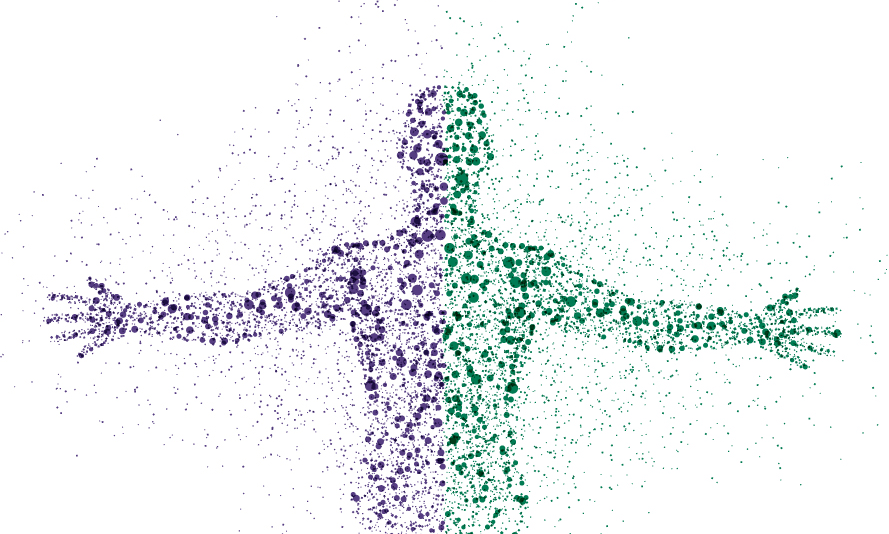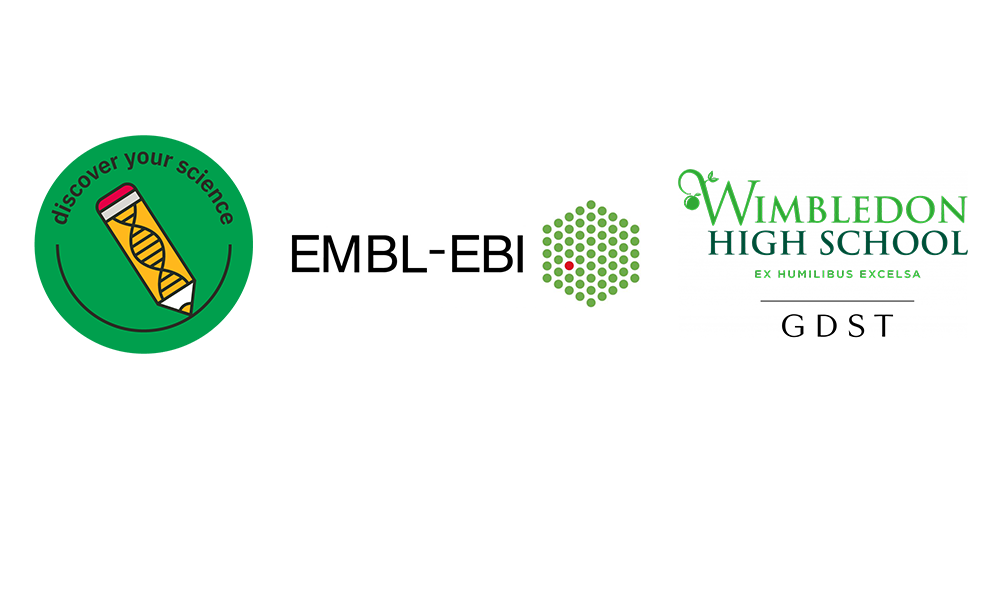Bringing bioinformatics to schools – the Life in Numbers project

Learn about our new educational project “Life in Numbers: bringing bioinformatics to schools
The last two decades have seen an unprecedented growth in the amount of biological data being generated. Advances in techniques such as high-resolution imaging, DNA sequencing, characterization of living systems on various levels have created vast libraries and repositories of digital biological information. As a result, the interdisciplinary and as yet young field of Bioinformatics has become a ubiquitous driving force of research in modern life sciences.
EMBL and its European Bioinformatics Institute, since its foundation, has become the worlds foremost hubs and source of biological and biomolecular data. EMBLs talented and diverse community of bioinformaticians works closely with other scientists providing new technologies and training in the different topics of the field.
Despite the ubiquity of the discipline in the laboratory, it is conspicuously missing from school classrooms. Since much of this digital data and tools of bioinformatics, are freely available and fairly accessible with a laptop/tablet, they become easy to implement in classroom settings. This has made it possible to remove the barriers to the world of research and give students a theoretical and practical inquiry-based introduction to the field through activities involving real-time biological data. It also fosters further appeal as students can investigate real-world scientific questions by accessing the available data. They are able to pose original research questions, formulate a hypothesis and access the tools required to investigate these questions.
Conception of LiNes
In spring/summer of 2020, EMBL, together with Dr. Clare Roper, the Director of Science, Technology and Engineering at Wimbledon High School (WHS) in London, organized a pilot bioinformatics course for secondary school students-Life in Numbers (LiNes).
Seven students from grade 11 of WHS, guided by EMBL scientists, bioinformaticians and their teacher Dr. Clare Roper got an in depth look into the field of bioinformatics, the data available and the various tools use to study and interpret biological data. The students, with the help of EMBL scientists also formulated authentic research questions and undertook real research projects. One student studied the differences in proteins involved in immune function in red and grey squirrel populations, another student chose to study data generated as a result of the on-going pandemic as she investigated which mammalian species lack binding sites for the coronavirus (SARS-CoV-2) spike protein.
Dr. Clare Roper, who was the driving force behind this resource, shares with us, through the featured article, how she was inspired to provide her students with this valuable opportunity.
Life in Numbers
By Dr. Clare Roper (Director of Science, Technology and Engineering at WHS, London)
For some time, I had been looking for ways to provide my senior secondary school students (ages 15 upward) with exciting opportunities to pursue their interests in science beyond the classroom. Extra-curricular clubs for the primary school and younger secondary school science are thriving with many programmes and activities available to enthuse younger students in STEM subjects with small-scale investigations, fun practicals, and competitions. However, there are fewer programmes available to entice older students and sustain their interest in science.
The expansion of publicly available big data has meant that there is far more data available to be analysed than there are scientists with time to interrogate it. This also means that student investigations are no longer limited by the resources, equipment and technical expertise available in school. The vast, and expanding sets of DNA, RNA and protein data on a huge variety of living organisms has opened up the opportunity for school students who have a basic understanding of inheritance and protein synthesis to work alongside bioinformaticians. Students can pose their own original research questions and experience the excitement of true scientific discovery as opposed to learning science with established protocols where the results are known. The students are motivated as there is the genuine purpose of contributing to the body of scientific knowledge and understanding. This has generated a real quest to discover something new with the added bonus that their research also deepens their own understanding of topics that are already on the syllabus.
At a recent conference, I was struck by the fact that many university research groups have expanded their vision from single lab experiments to large broad collaborations where research questions are based on datasets which already exist. The scientific method has seemingly evolved from the more traditional route of designing data collection methodology after posing the research question. This type of ‘dry lab’ data mining research has proved particularly popular with my students during lockdown, where they have realised that they can pursue their interests and do ‘real’ science from home on their own computer without any complex equipment or software. It has given them a taste of post-graduate research in today’s world.
I have been delighted that the opportunities that they have had to collaborate with scientists and conduct their own research projects and follow them all the way through to producing a mini paper or poster, has piqued their interest in pursuing careers in science.
LiNes pilot course
The following students of Wimbledon High School participated in the pilot of LiNes and conducted research projects. The students shared their thoughts and experiences in the video featured above.
- Beatrice Frediani
Project: A comparison of MHC proteins between red squirrels and grey squirrel
- Ellen Weir
Project: Evolutionary relationship between the spike glycoprotein on SARS-CoV-2 and other related beta coronaviruses
- Isabel Nunn
Project: Investigate similarities and differences in spike proteins of different coronaviruses
- Kate McKeough
Project: Comparing SNPs in genomes of the red and grey squirrels specifically SNPs
- Poppy Swanton
Project: Investigating the role of the ACE-2 receptor and its role in SARS-CoV
- Rhea Sheth
Project: The Role of Replicase Polyprotein 1ab in SARS-CoV-2 and the analysis of its cleavage sites; publication in Young Scientists Journal
- Sophie Corben
Project: Use variant data to infer the history of human health and migration
Our collaboration
This project is a collaboration between EMBL’s European Learning Laboratory for the Life Sciences, Public Engagement at EMBL-EBI and Wimbledon High School, London, United Kingdom.

